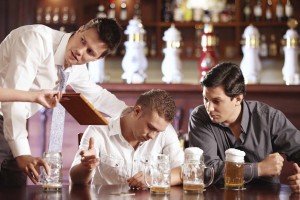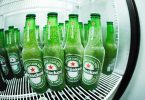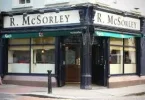Pre-drinkers
The review draws on original qualitative research comprising pre-work, interviews and workshops with a total of 180 participants (aged 18 to 29) while ICM conducted interviews online with 1,918 18-24 year-olds about their drunken nights out, a review of literature and it also conducted interviews with key informants.
Resulting from this, the study by social research company Simon Christmas last September found that roughly two-fifths of 18 to 24 year-olds agree with the statement, “I really enjoy going out to get drunk” and 15% of this age group state that they drink with the intention of getting drunk every time or most times they drink alcohol.
‘Ethanol-delivery mechanisms’
One striking statement from the report seems to sum up the problem with drunken nights out: “Alcoholic drinks are treated as ethanol-delivery mechanisms, with calculations of ‘units per pence’ and appropriate concentrations guiding choice of drink”.
But clearly cost is not the only issue. ABV also comes into play in young people’s considerations: the weaker the drink the more one has to consume to get drunk and the more one therefore runs the risk of becoming ‘bloated’.
Pre-drinking & nights out
However the evidence in the report also suggests that those who pre-drink may drink just as much when out as those who have not pre-drunk.
“Pre-drinking has often been linked to cost and there is evidence that the opportunity to get drunk for less money does play a role,” suggests the report, “However, the evidence also suggests that those who pre-drink may drink as much when out as those who have not pre-drunk.”
It points out that, “In the research conducted for Drinkaware by Ipsos MORI (2013), for example, 51% of those who had pre-drunk on their last night out had, over the course of the whole night out, drunk 11 or more units compared to 28% of the base (all who drink alcohol outside the home).
“Strikingly, the mean number of units drunk by those who pre-drank when in night-time economy venues was, at 6.37 units, not significantly different from the average for the whole base (5.68 units) – in line with the view that pre-drinking does not, in fact, lead people to drink less when they are out.
Others, too, have found that those who drank before a night out drank similar amounts once out to those who did not drink before a night out so pre-drinking is not necessarily a substitute for consumption when out.
“As a result, pre-drinkers ‘reported significantly higher total alcohol consumption over a night out than those not drinking until reaching bars and nightclubs’ – and they were four times more likely to report drinking more than 20 units on a usual night out.
A consistent finding has been that pre-drinking is associated with greater alcohol consumption and therefore intoxication.
What’s worrying too is that responses from the Drinkaware study’s participants suggest that molestation and groping are common experiences as part of a drunken night out, mostly involving female victims.
But eventually, peer groups grow up and drunken nights out become more sporadic.

A consistent finding has been that pre-drinking is associated with greater alcohol consumption and therefore intoxication.
Growing up
It will come as no surprise to discover that drunken nights out are a passing phase to most, with many respondents seeing participation in drunken nights out as a phase in life, an opportunity to get something out of their system before taking on responsibilities – though projections of the age at which they would need to move on varied.
Researchers into this aspect of drunken nights out have found that, normally, a period of peer group excess was followed by moderation in relation to alcohol consumption as both the responsibilities of working and family lives came to the fore.
“Just as young adults with changing priorities start finding better things to do with their time than being hungover” points out the report, “so too they start finding things other than alcoholic drinks to spend their money on. It was striking that some of our younger participants felt they had little else other than drunken nights out on which to spend any money they earned or received.”
The move away from home, however, brought new financial responsibilities (alongside the new freedoms).
As people take on more responsibilities – work, partners, families – and they’ve less time to see their friends, the relationship between the group and drunken nights out eventually becomes a reciprocal one, with the drunken night out being the only thing that holds the group together, states the report.
It seems that little has changed since Drinks Industry Ireland conducted its own Discussion Forum several years ago with young people and discovered much the same excessive attitude to alcohol.








